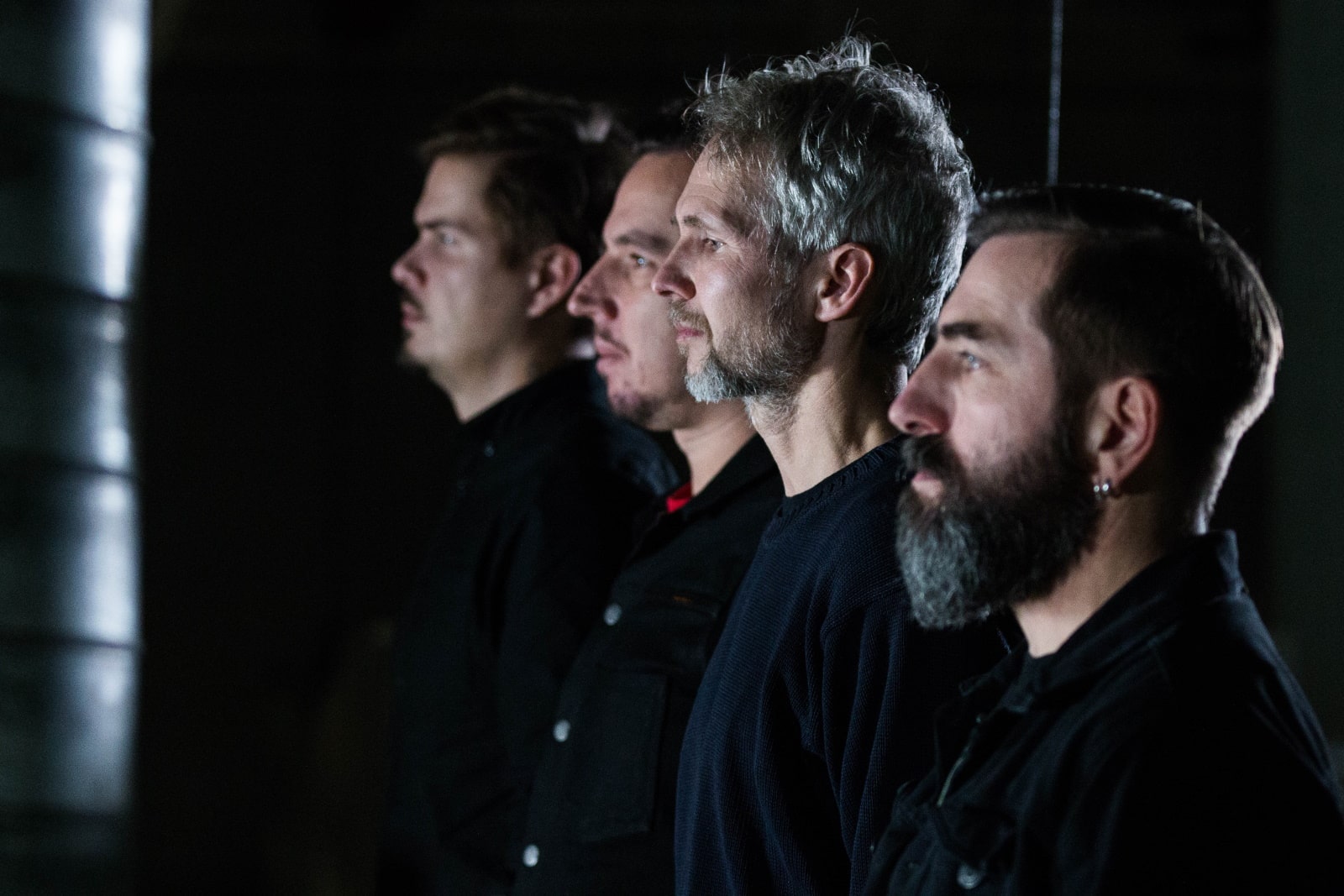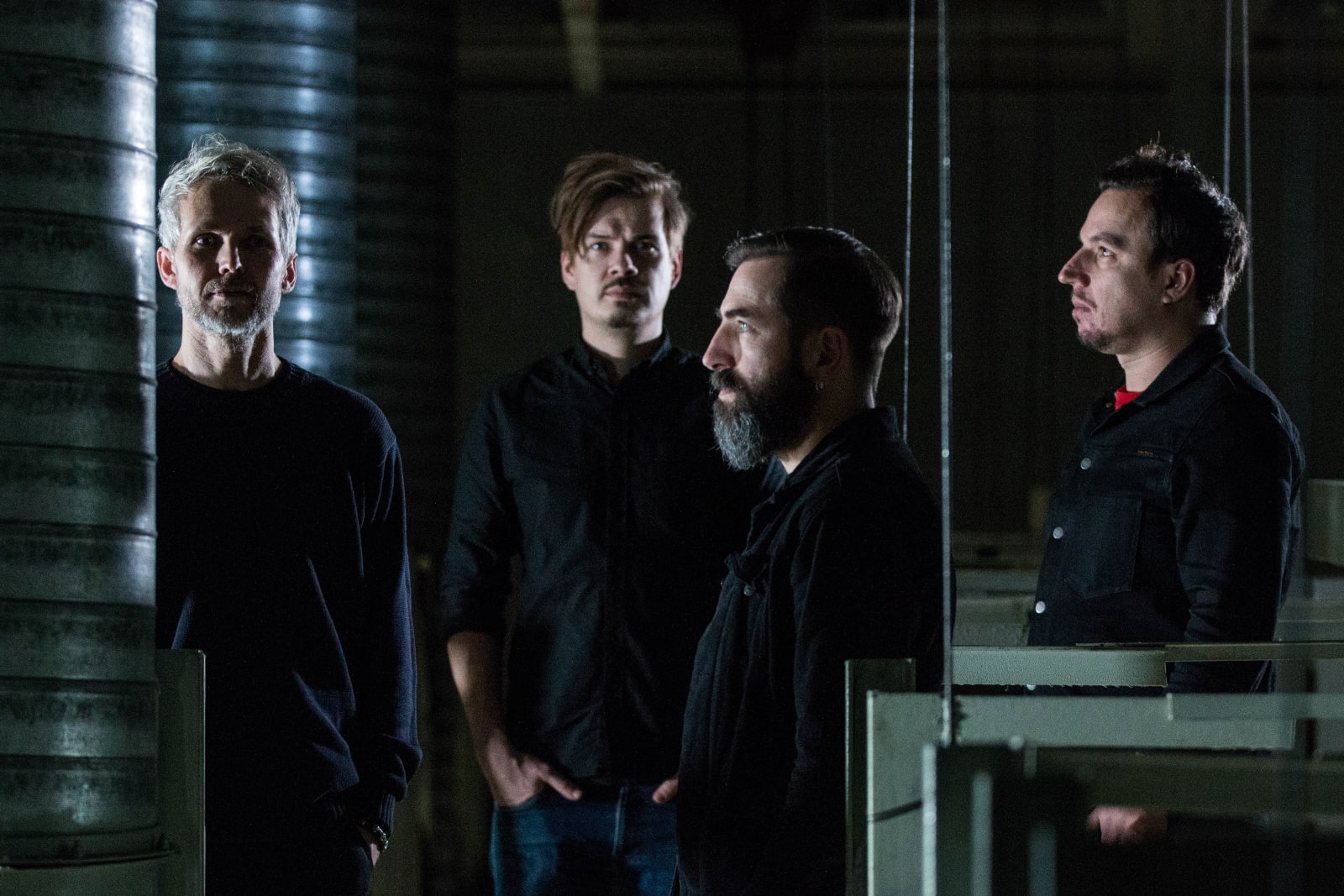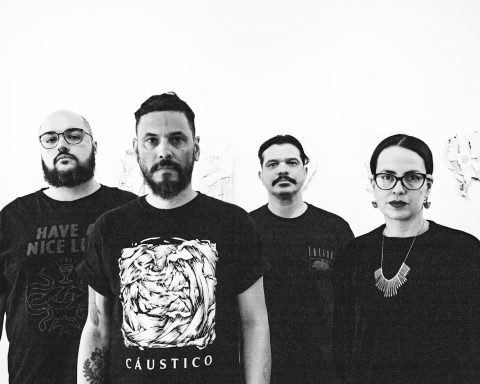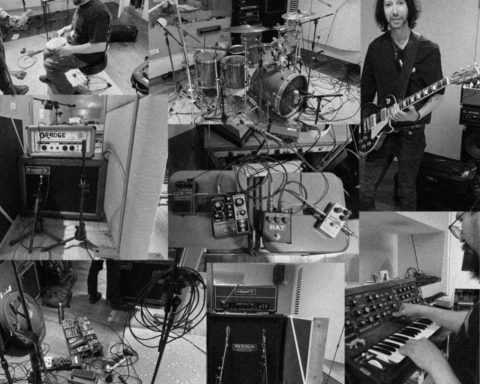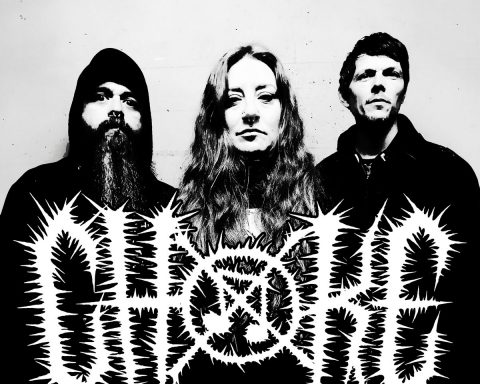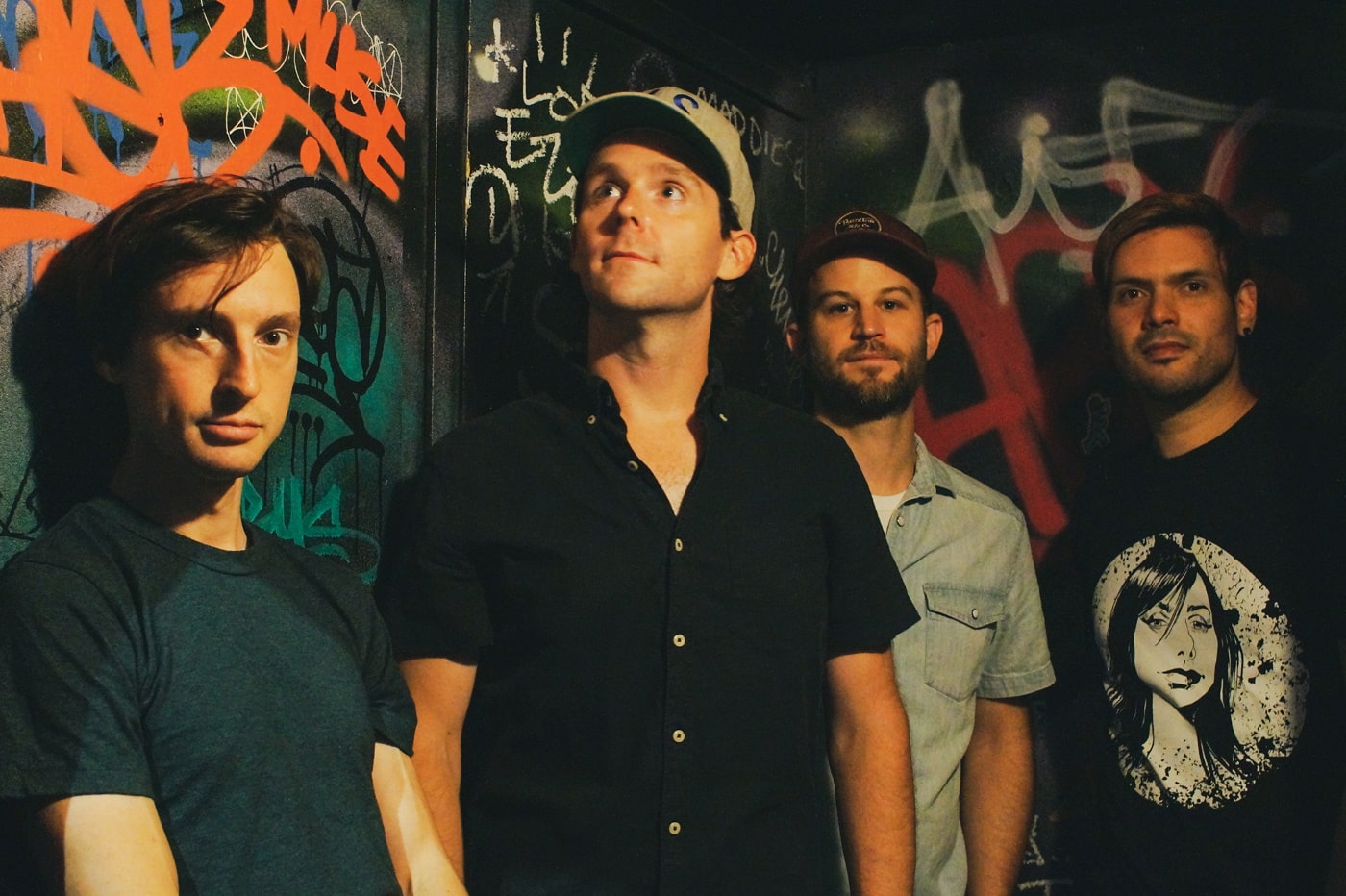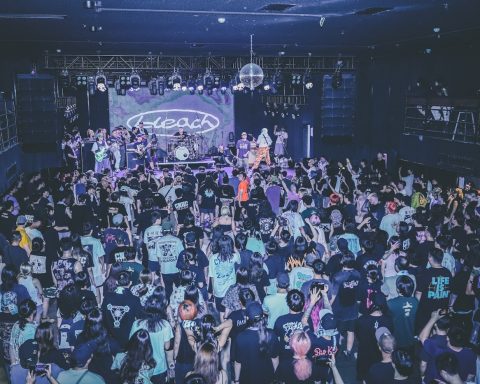Started as a one-man-project by Margus Voolpriit, WOLFREDT released two albums in 2013 and 2016. With expanding the sound for the third album Margus realized that additional band members could even be more helpful to bring more melodies, dynamics and ideas into the project. So the four-piece Wolfredt was born now and worked from the start on the upcoming third album “Tides”. The album follows the eternal way of the “tides”. The coming and going of flood and ebb, the up and down of the endless circle of life, where past, present and future mix and always repeat.
Musically the band wrote this down in lengthy guitar-based dynamical instrumental pieces, melodic bass guitar lines, and heavy use of distortion and effects and an eminent ambient sound, sometimes dark and sometimes grand.”Tides” comes as a classy , mature record laced with emotional communication through musicianship, an album that serves a true reflection of the capacity, potential and diversity of instrumental post rock subgenre.
If you have to compare them to any other bands, Russian Circles, We Lost The Sea or Caspian may fall into your mind.
Track by track commentary by Margus Voolpriit – guitar, Andres Soosaar – guitar, Pertti Johanson – bass, Kallervo Karu – drums:
The Flood
Margus: I stumbled upon the article about the alternate tunings Sonic Youth had. Lee Ranaldo used AAEEAA and GGDDGG in several songs. So i built myself the EEBBEE guitar and this song was the first thing i tried, it just flew out of this instrument. The downside is that now I have one more thing to carry around to shows…
Andres: Great track for opening, sudden intro and noisy end. Easy to play and get in the mood for the rest.
Walrus Song
Margus: This is the oldest song in the album, we played it live before the album several times. I think it marks the beginning of new, “heavier” Wolfredt although our second album “Neverno” had a few on it, “November” for example.
I really enjoy when the middle part suddenly starts in the not-so-obvious place. It sort of interrupts the song and takes it over. Also, you can hear “pots and pans and random cutlery” in the quiet-loud-quiet part, I think it adds a certain anxiety to the track.
Kalle: Being the oldest song from the bunch, Walrus marked my entry into the band and Margus´ new music. It was the first one to be recorded, I immediately clicked with the hauntedness of the track and to me the music displays something very primal.
Andres: Also an easy track to play. It’s nice to start with noise right from the beginning. These jambolayas in the main theme make me always chuckle. Don’t know why. Maybe a little bit harebrained :). The only track I use Big Muff on, to make sound “wicked”.
Pertti: Whenever there is space in music I will put a bass melody line there, this song has some.
Colossus
Margus: When I have an idea for a new song I sometimes let it sit for several days. I don’t sleep on top of the piano like Frank Zappa and I don’t wake up in the middle of the night to write it down or record it. I let it be and if it’s gone in the morning, well, it wasn’t good enough then. This idea I had when I was on a vacation in Rhodos with my wife. It was stuck in my head for a week before I had a chance to play it on an instrument. I called it Colossus because, well… Rhodos.
Andres: Many different parts to play and lots of loops. I guess it is the most difficult track for the whole band to play correctly. Strange that Margus didn’t mention Iron Maiden.
Margus: Ha. Ok, yes, I like to think of it as a tribute to my childhood favorite, because of the guitar triads in the end. I sometimes imagine us doing a guitar choreography when playing it live.
Pertti: Really fun and difficult to play, but also rewarding, and yeah there is always a sudden urge to put one leg on the monitor and let it rip.
Ghost In The Machine
Margus: This song is basically built on the rhythm part of the first section. I had this idea about monotone guitar riff playing on and off the rhythm, on kick and on snare. It was very weird when I played it alone at home on an acoustic guitar but it worked in my head and i was so relieved when it actually worked with the band. I think this is my personal favourite on the album although it’s probably the least post rock song.
Kalle: Yes, this is a juggernaut, going from steady to unstable every turn. Rhythmically one of the funnest pieces to play.
Andres: There is something about the rhythm thing.
Pertti: Inspired by the shaker pattern I sneaked in a disco bassline in the chorus and lived to tell the tale.
The Forgotten Man
Kalle: This for me was the most pleasurable song to record. In terms of the work we put into this and dynamics we managed to get from start to finish in a take. Margus had this beautiful orchestration, filled with arpeggios and some very heavy riffs. We wanted the drums sounding solid both in the easiest and the heaviest parts, and then built on top a wide selection of percussion and an electronic part on top.
Margus: We used lots of percussion on the album. Shakers, tambourines but also weirder stuff. This one for example has wind chimes, iron chains thrown to the floor and a really nice and peculiar sounding bell Kallervo had that strangely enough was completely in tune with the song!
Pertti: Really beautiful composition by Margus, combining these totally different parts to an amazing song. The riff in the third part must be one of the most powerful I have played.
Also – bass solo.
Andres: The Forgotten Man is a nicely growing track. Playing this reminds me the day we did these forest parts for the video. Arpo (The Man) ran around in the woods and Margus chased him with a camera. For a moment they disappeared somewhere and didn’t appear for a long time. I was pretty sure they were lost and already planned a smaller rescue operation.
Moebius Strip
Kalle: This is a grower as well, especially taking the drum-part. We tried to make the song like a journey to somewhere it wanted to go. I´ve always thought of it as some sort of a home-coming anthem.
Andres: This one was the hardest to figure out what to play. Still don’t know exactly how to use e-bow in the centre part. While recording the song I was very pleased with my part in the end, but now it seems a bit too obvious. I really like the bassline in the beginning.
Margus: There’s an old metallophone in our rehearsal space, I’ve used it since the first album. I really love how clean guitar and metallophone add to each other’s sound.
And talking about strange percussions – there’s a beat in the middle part made with the fridge door.
Pertti: One of my favourites on the album, the sad and searching first half and epic ending where everything seems to fall apart, but we manage to keep it together somehow.
The Ebb
Margus: Another song written on the EEBBEE guitar. Fun fact: because of the tuning the working title of this song was “Ebb”. Then I discovered it actually means something and named the first song (previously called “Mammoth”) The Flood. Next step was to name the album Tides. So the weird guitar tuning was kinda the godfather for the whole album.
I love how Andres gets to use his bow in this song and how the whole track kinda opens up in the second part.
Andres: Yes, I like different ways to make guitar sound and this one is the most pleasant. Using looper provides an opportunity to grow, making different layers speak to each other. It’s really hard here to not forget to switch. I’m quite happy too with my own lines in the second part. I really enjoy playing this song. Another fun fact: we just ordered a new bow and after the first test I repacked it properly (I didn’t want anyone else to use it). Margus as a decent person seeing the pack the next day, threw it away, of course. So we had to order a new one and wait again another month. I never pack my stuff in the rehearsal room again.
Pertti: Slowly growing repetitive patterns create this beautiful soundscape. Perfect lead out. Also I am very proud of the bass part here, just going bum…bum-bum and letting the guitars shine.



